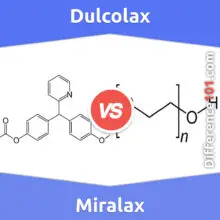Rods vs. Cones: Rods and Cones are two different types of photoreceptors in the eye’s vertebrate retina. The main difference between rods and cones is that rods are very sensitive to light and only be used for vision under low lights, while cones are not very sensitive and can be used under high light conditions.
Let’s take a closer look at Rods versus Cones:
| Light Sensitivity | Rods are more sensitive to light as compared to cones |
| Vision | Rods are used for monochromatic vision, while cones are for color vision |
| Visual Pigment | Rods contain rhodopsin, while cones have iodopsin as visual pigment |
| Inner End | The inner end of robs has a small knob while cones have branched inner end |
Table of Contents
What Are Rods?

Rods are the most sensitive cells of the retina’s peripheral part in the vertebrate’s eye. The retina contains almost 120 million rods which are very sensitive to light. The vision gained with the help of rods is known as scotopic vision. Due to their light sensitivity, rods can provide vision at night.
What Are Cones?

Cones are the type of photoreceptors in the retina responsible for color vision in the daytime. These photoreceptors are not very sensitive to light. And the vision gained with the help of these is called photopic vision. Cones are less in numbers than rods; a retina has 6 million cones.
5 Differences Between Rods and Cones
| Components | Rods | Cones |
|---|---|---|
| Meaning | Rods are rod-like photoreceptors in the retina, providing twilight vision | Cones are also a receptor present with the retina and provide photopic vision |
| Location | Rods are usually found at the boundary of the retina | Cones are found in the center of the retina |
| Amount | The amount of rods present within the retina is 120 million | The amount of coins in the retina is 6 million |
| Shape | The shape of the outer segment of rods is cylindrical | The shape of the outer segment of cones is conical |
| Deficiency | The deficiency of rods pigments can cause night blindness | The deficiency of cones pigments can cause color blindness |
Rods vs. Cones Similarities
There are several similarities between rods and cones:
- Both are the photoreceptors of the eye, which are present in the retina.
- Both of these cells have the same process of photo-transduction.
- Rods and cones both absorb light but at a different wavelength.
Rods vs. Cones Pros & Cons
Pros and Cons of Rods

Pros of Rods
- Rods contribute to nighttime vision and process a great variety of stimuli.
- Rods cells work as specialized neurons that convert visual stimuli to photons.
Cons of Rods
- Rods have a high sensitivity to light and cannot provide vision in the daytime.
- Rods can’t distinguish different wavelengths of light.
Pros and Cons of Cones

Pros of Cones
- Cones are very active at higher light levels and can provide color vision.
- Cones are not sensitive to light and are responsible for high spatial acuity.
Cons of Cones
- The deficiency of cone pigment can cause a severe eye disorder, color blindness.
- Cones can work only in bright light.
Comparison Chart

Comparison Video
Conclusion
Rods or cones are important photoreceptors in the retina of the vertebrate eye. If we compare and contrast rods and cones, these two photoreceptor cells have some distinctions and share some similarities. The main difference between cones and rods is that cones are less sensitive to light and can provide vision in daylight, while rods are very sensitive to light and can only provide vision at night. There is also a significant difference in rods and cones regarding location, amount, and structure.







